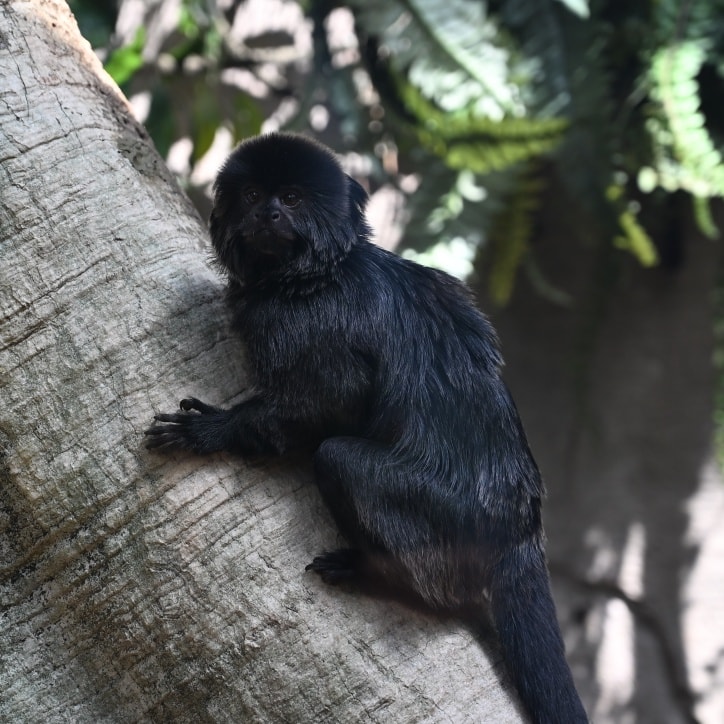- Adaptation and Behavior of Goeldi’s monkeys in a new Amazonian habitat
- Impact of habitat design on the health and well-being of captive primates
- Conservation efforts and the role of zoos in preserving Goeldi’s monkeys
- Educational and engagement opportunities provided by the new exhibit
- Challenges and considerations in simulating natural environments within zoos
Goeldi’s monkeys, small and social New World primates native to the Amazon Basin, have recently garnered attention due to their relocation to a newly designed habitat within an Amazon gallery. This narrative explores the intricate details of their adaptive behaviors and overall response to the thoughtfully constructed environment created to emulate their natural ecosystem.
Adapting to a novel habitat demands great flexibility and resilience from any species, and Goeldi’s monkeys are no exception. Typically found in the understory layer of the Amazon rainforest, these agile creatures thrive in environments that provide dense vegetation and opportunities for extensive arboreal activity. The new habitat encapsulates these quintessential features with its complex vertical structure, incorporating multiple layers of foliage and interwoven branches that promote the natural climbing and leaping behaviors exhibited by Goeldi’s monkeys. Moreover, hidden food pouches and foraging sites stimulate their instinctual feeding strategies and cognitive skills, offering both physical exercise and mental engagement.
A crucial aspect of simulating a rainforest is the management of social dynamics within Goeldi’s monkey groups. These primates are known for their tight-knit, communal living arrangements, and specialists in zoo management carefully consider group composition when introducing them to a new space. The intricacies of their social interactions, from grooming to territorial calls, provide insight into the adequate size and complexity needed in a habitat. Observations reveal that the Goeldi monkeys show increased interaction and cooperative behaviors, indicating a thriving social structure in their updated residence.
Another significant element of the bespoke habitat is its impact on the health and well-being of these monkeys. The artfully arranged environment offers ample opportunities for natural behaviors such as climbing, jumping, and foraging, which are vital for their physical health. Additionally, the variety and enrichment embedded within the exhibit serve as a buffer against the monotony and stress that can occur in less dynamic enclosures. Early assessments demonstrate a positive effect, with Goeldi’s monkeys showing lustrous coats, robust activity levels, and a notable lack of stereotypic behaviors often associated with captivity.
Captivating visitors’ interest, the new Amazon gallery also plays a vital role in wildlife conservation education, introducing the public to the world of Goeldi’s monkeys and their plight in the wild. Interactive displays and educational talks provide knowledge about their conservation status, which is threatened by habitat destruction and illegal pet trade, and impart the importance of sustainable environmental practices. These programs not only entertain but empower visitors with actionable steps they can take to support conservation efforts.
Zoos have become critical players in preserving endangered species like Goeldi’s monkeys, which are classified as vulnerable by the International Union for Conservation of Nature (IUCN). Breeding programs under human care contribute to the species’ genetic diversity and population stability, serving as a potential buffer against extinction. The well-being and adaptability of the monkeys in their new abode are a testament to the successful implementation of such conservation initiatives, as the immersive habitat fosters natural behaviors essential for their long-term survival, both in captivity and potentially in the wild.
Creating a realistic and stimulating Amazonian environment within a zoo’s confines presents challenges and considerations. Expertise in zoo management and animal welfare is paramount to address the subtleties of microclimate control, dietary needs, and behavioral management that mimic the conditions of the dense rainforest. Despite these challenges, the Goeldi’s monkeys flourish, signifying a successful blend of scientific understanding, environmental stewardship, and dedication to species conservation.
Introducing the Goeldi’s monkeys to this newly curated habitat in the Amazon gallery spurs enthusiasm and curiosity, emphasizing the adaptive nature of these spirited primates and underscoring the intersection between educational engagement, wildlife conservation, and zoo management expertise. Through careful planning and execution, their home within the gallery fosters the monkeys’ physical and psychological well-being and serves as a cornerstone for public awareness and conservation advocacy. From the nuances of their daily acrobatics in this recreated piece of the Amazon to the larger implications for species conservation, Goeldi’s monkeys continue to inspire and educate as they thrive within their new environment.
*****
Source Description
The Goeldi’s monkeys are loving monkeying around in their new habitat in the Amazon gallery 🦍


